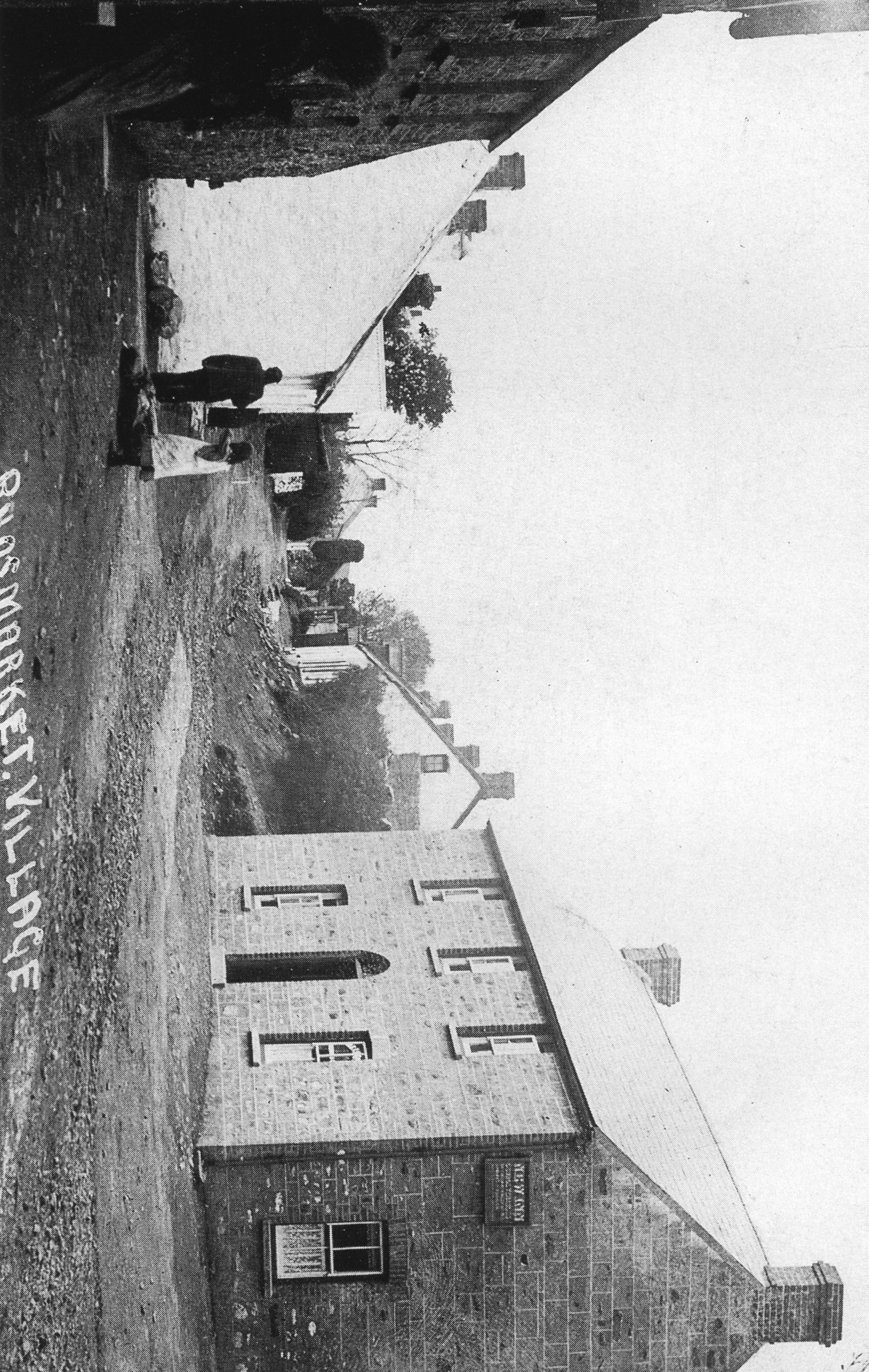The New Inn public house was located on the corner of West Street and Middle Street, where records show that the earliest registered reference to a pub on the site was in 1847.
 Map from 1885, © Landmark Information Group and Ordnance Survey
Map from 1885, © Landmark Information Group and Ordnance Survey
The Pembrokeshire Then & Now series included a fascinating insight into the history of the New Inn pub in its Volume 2, published in 1989 and from which some of the following is sourced.
Described as “one of Rosemarket’s best-qualified narrators of the origins of the pub”, the publication featured an interview with Mr Billy George Mathias. He was born at the New Inn on 7th November 1910, and was brought up within its walls. It had been the family home for generations – his great-grandparents, Mr and Mrs Stephen Morris, were licensees there. Mr Mathias had happy memories of his childhood house, where his grandmother, Mrs Elizabeth (‘Gran’) Venables, was the last landlady.
He recalled: “We used to brew all our own beer on the premises and if we ever ran out, then my grandmother would have to travel all the way to Milford Haven in a horse and trap to get some from Ind Coope’s (brewery). I remember when real ale cost only a penny ha’penny for a sleever, and many bartering transactions were sealed in the pub, which became the venue for much local trading of stock, produce and other items. It was a big meeting place in those days”.
The New Inn also had a secondary role, that of the rent collections offices when, at three-monthly intervals, an agent for the Lawrenny Estate came to the village to collect payments due on properties belonging to the major landowners in the area, the Lort-Phillips’.
The first place of worship in Rosemarket?
A story which was passed down through four generations of Mr Mathias’ family was that on the site of the New Inn at one time was the first place of worship in Rosemarket. He explained that it was a building of dome-shaped construction which would hold about a dozen people, and was situated opposite the market place. It was believed that the worship house was later converted into an exchange house (or ale house) and then renovated and opened as the first licensed public house in Rosemarket.
Mr Mathias went on to explain that “when it opened, my great-grandmother, who was also born at the premises, held the licence. This was handed down, like an heirloom, to ‘Gran’ Venables”.
As the population of the village increased – in 1811 there were 270 people in Rosemarket compared with 486 in 1831 with the coming of the Pembroke Dockyard – the pub premises became too small. The Lawrenny Estate decided to pull the old building down and construct a new, larger one in about 1886.
The pub with no beer
The New Inn was rebuilt using local red stone, which was hauled from the quarry at Norton Hill, some three-quarters of a mile away. The stone was trundled by horse and cart along the narrow, winding mud track that formed the main road into the village and the pub was hand-built by local people.
However, the new pub, although completed with a bar and lounge area, as well as a third downstairs room, never opened for the consumption of alcoholic liquor again. The exact details and reasons for this are the subject of much discussion. One theory was that a powerful member of the Chapel community did a great favour for owners of the Lawrenny Estate and in return, asked that all the pubs and ale houses on the estate be closed. To honour the pledge, the landowners then banned the New Inn from selling beer.
Another theory was that an influential member of the village used to “get the horrors and do daft things in drink”. He declared that the pub would have to be closed, or else he would have to leave Rosemarket. He then got up a petition and persuaded villagers to sign it to do just that.
 New Inn public house
New Inn public house
The above photo is believed to be dated around 1906, although estimates vary. The exact date that the New Inn ceased trading altogether is not known.
Present day
Today, no. 2 West Street is a private residence, with its current owners having lived there since 2016. Inside, with a little imagination, one can picture the layout of the original pub. Unfortunately, the whereabouts of any artefacts from its time as a pub are not known.

The site does remain in close proximity to a public house however, with The Huntsman Inn being directly opposite.